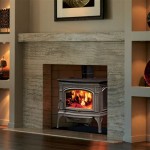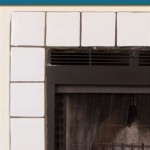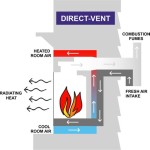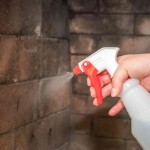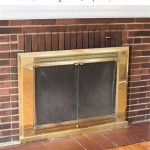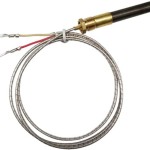Wall Above Gas Fireplace Gets Hot: Understanding Causes and Solutions
Gas fireplaces offer a convenient and aesthetically pleasing alternative to traditional wood-burning fireplaces. However, a common concern that arises with gas fireplaces is the tendency for the wall above the unit to become excessively hot. This phenomenon can raise concerns about safety, potential damage to the wall, and overall energy efficiency. A thorough understanding of the underlying causes and available solutions is vital for homeowners with gas fireplaces.
The heat emanating from a gas fireplace primarily results from the combustion of natural gas or propane. While designed to be contained and directed towards the room, some heat inevitably radiates upwards and outwards. The extent to which the wall above the fireplace gets hot depends on several factors linked to the fireplace's design, installation, and operational characteristics.
Inefficient Heat Transfer Mechanisms
One major contributor to a hot wall is the efficiency, or lack thereof, in the fireplace's heat transfer mechanisms. A well-designed gas fireplace should effectively circulate heat into the room, minimizing the amount that radiates directly upwards. Faulty or inadequate design features can cause the majority of heat to be concentrated near the top of the unit, leading to a significantly warmer wall directly above it. This can manifest in several ways:
First, the venting system plays a pivotal role. Gas fireplaces typically utilize direct-vent, B-vent, or vent-free systems. Direct-vent systems are generally considered the most efficient, as they draw combustion air from outside and exhaust flue gases directly outdoors through a sealed system. This minimizes heat loss into the surrounding structure. B-vent systems rely on the natural draft of a chimney to exhaust combustion products. These systems can be less efficient and more prone to heat radiating upwards. Vent-free systems, while convenient, release all combustion products into the room, which can contribute to higher overall temperatures and a greater likelihood of a hot wall.
Second, the internal design of the fireplace affects heat distribution. Gas fireplaces employ features like blowers and heat exchangers to circulate warm air effectively. If the blower is malfunctioning or the heat exchanger is poorly designed, the heat may not be distributed evenly, resulting in localized hot spots on the wall. Blower functionality is essential for pushing heat output into the room, drawing cooler air in at the bottom and expelling warmer air at the top or front of the unit. If the blower is failing, slowing down, or has clogged intakes, the wall will become excessively hot.
Third, insulation in the body of the fireplace is crucial. The fireplace unit should be insulated properly to ensure the heat generated from the combustion chamber is directed forward into the room instead of radiating upwards and outwards, towards the wall. Over time, insulation can degrade, become displaced, or get damaged, ultimately diminishing and allowing more heat to radiate through the firebox.
Improper Installation and Clearances
Beyond the design of the fireplace itself, proper installation is paramount to ensuring safe and efficient operation. Insufficient clearances between the fireplace and adjacent combustible materials, like drywall or wood framing, can allow excessive heat to build up and increase the temperature of the wall. Building codes specify minimum clearance requirements for gas fireplaces, designed to prevent overheating and the risk of fire. If these clearances are not met during installation, the wall above the fireplace can become dangerously hot.
Furthermore, the type of wall construction plays a significant role. Walls constructed of combustible materials, such as wood framing and drywall, are more susceptible to heat absorption than non-combustible materials like concrete or brick. In cases where combustible materials are used, greater clearances and potentially additional heat shielding may be necessary to mitigate the risk of overheating.
Often, installers may not adhere to the manufacturer's specifications during installation. This can include improper venting, inadequate insulation around the fireplace unit, and failure to maintain proper clearances from combustible materials. Homeowners who suspect installation errors should consult with a qualified professional to assess the situation and implement corrective measures.
Operational Factors Influencing Wall Temperature
Even with a well-designed and properly installed gas fireplace, certain operational factors can contribute to a hot wall. The intensity and duration of use significantly impact the temperature of the surrounding surfaces. Running the fireplace at its highest setting for extended periods will naturally generate more heat, increasing the likelihood of the wall becoming hot.
The type of fuel used can influence the amount of heat generated. Propane typically produces more heat per unit volume compared to natural gas. Therefore, a gas fireplace fueled by propane may produce a hotter wall than one fueled by natural gas, assuming all other factors are equal.
Additionally, the presence of obstructions near the fireplace can impede airflow and contribute to overheating. Placing objects like furniture or decorative items too close to the fireplace can restrict the ventilation, increasing the temperature of the surrounding surfaces. Regular maintenance is crucial to ensuring the fireplace operates safely and efficiently. This includes cleaning the burner, inspecting the venting system, and checking for any signs of damage or wear. Neglecting maintenance can lead to inefficiencies and increased heat buildup, potentially causing the wall to become excessively hot.
Addressing a hot wall above the gas fireplace involves considering all three critical points mentioned above. Any remediation effort should first address safety concerns and follow the specific requirements of the appliance manufacturer.

Reducing Heat Above Gas Fireplace Insert

Should I Mount A Tv Over Hole In The Wall Gas Fire Rigbys

Ortal S Innovative Technology Makes It Safe To Mount A Tv Above Your Fireplace

5 Ways To Protect Your Tv From The Heat Of Fireplace Tips

Can I Mount My Tv Above The Fireplace

Moving Hot Air How To Heat Your House Using Fireplace
How To Prevent The Mantel Above A Gas Fireplace From Getting Hot Quora

Pros And Cons Of Mounting Your Tv Over Fireplace Vancouver Gas Fireplaces

ᑕ❶ᑐ Can An Electric Fireplace Be Against Wall

How To Get The Wall Mounted Tv And Electric Fireplace Setup Of Your Dreams Yorkshire Stoves Fireplaces
Related Posts

